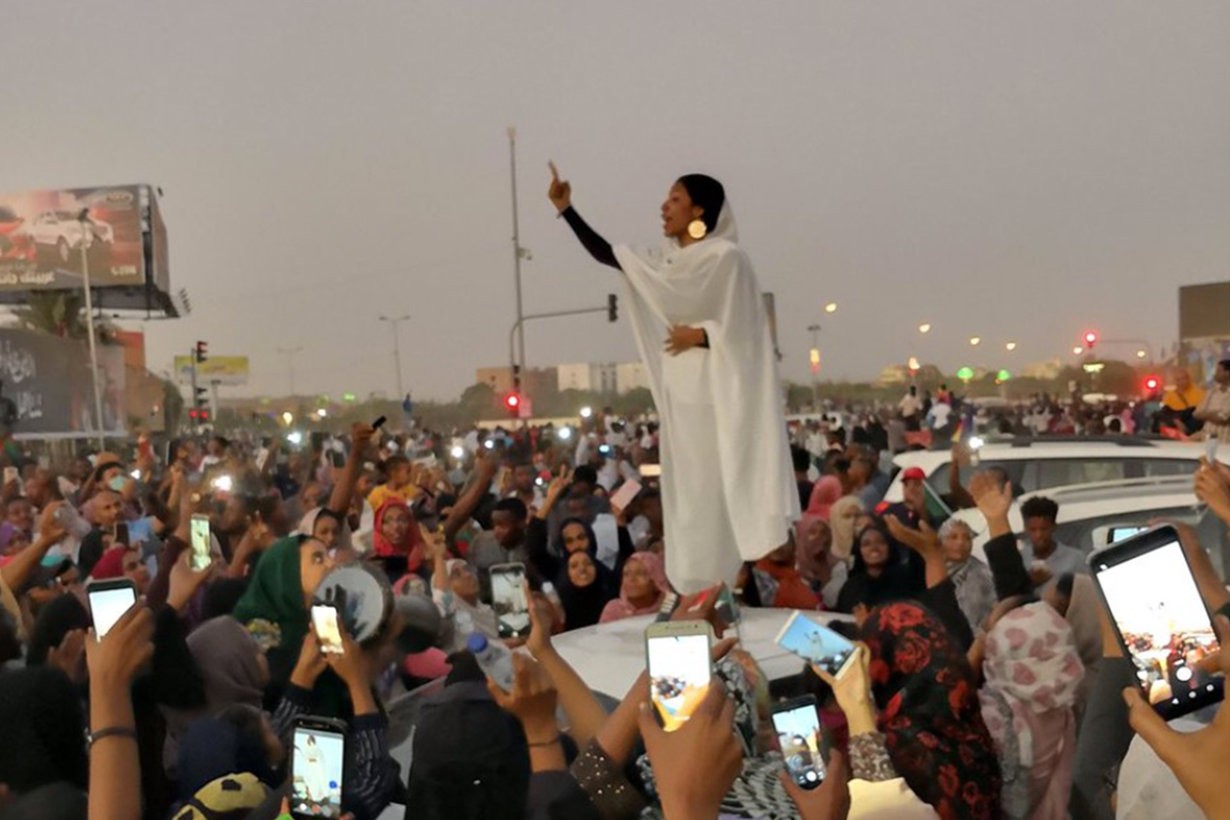
This backgrounder on the growing crisis in Sudan explains what is currently taking place, how we got here and what the future might hold.
[LAST UPDATED September 2, 2019]
On August 17, Sudan held an official signing ceremony for its new constitution. This implemented the much-hoped-for agreement and transition of power from military to civilian rule in Sudan.
Key Events in the Current Status of Sudan
-
- The country’s top general, Abdel Fattah Burhan, has been sworn in to rule a joint military-civilian body that will govern the country for a 3 year transitionary period.
- Burhan will lead for the first 21 months and a civilian leader will rule for the next 18 months.
- The joint military-civilian body is known as the Sovereign Council. It is a power-sharing arrangement between the military and the protesters.
- The 11 member Sovereign Council includes 5 military members, 5 civilian members and an 11th member who is a Coptic Christian Judge agreed upon by both sides.
- Amond the first priorities of the Sovereign Council is to reach agreements with the multiple rebel movements taking place throughout the country. The Sovereign Council has 6 months to achieve this.
- Rebuilding Sudan’s economy is also a major priority. The civilian side of the Sovereign Council elected the economist Abdalla Hamdok to be their leading voice, signaling the priority upon economic reforms.
Read: What Caused the 2019 Protests in Sudan

(This Sudan backgrounder and fact sheet will be updated regularly.)
Basic Timeline of Current Events in Sudan
Sudan Protests – April 2019

A growing wave of protests swelled across the African nation of Sudan. The protests began at the end of 2018 but grew in size in the first four months of the new year. As the protests grew the potential for a coup as well as more violent crackdowns from the government against the protesters intensified.
For the first four months of 2019 Sudan was stuck in a new level of crisis. Protests which began on the basis of economic issues grew to demand the ouster of Sudan’s president Omar al-Bashir and an end to his 30-year reign.
The Sudanese government responded to these protests with force. Internet and communication channels were shut down. Human rights organizations reported that more than 50 protesters were killed. More than one thousand people were arrested.
Omar Al-Bashir declared a state of emergency to tighten his grip on power and resist any potential for a coup. He dissolved state and federal governments and replaced leading government positions and posts with handpicked military leaders. It was not enough however and in April of this year the military of Sudan overthrew longtime dictator President Omar al-Bashir.
- Read: Who Was Omar Al-Bashir
The military took over key strategic sites throughout Khartoum and the country. President Omar al-Bashir was nowhere to be found. The state-run media announced a special announcement from the military was soon to be announced.
Although thrilled with the sight of their potential victory over Bashir’s dictatorship, a new concern among the protesters was that the al-Bashir would merely be replaced by another general/dictator.
Sudan Protests – May 2019

As the momentum of the protest movement spread throughout Sudan these initiatives were seized upon by several leading Arab states to have their will included within the final agreements that would inevitably take shape.
In recent years al-Bashir made enemies among influential leaders and states in Saudi Arabia, Egypt, and the United Arab Emirates. As he left power in Sudan, Saudi Arabia and the UAE made pledges of $3 billion in aid packages to the nation. The UAE hosted talks with various rebel and military groups in hopes of forming a transitional government.
Tensions continued to escalate between the civilian protesters and the military government that had installed itself in Al-Bashir’s absence. Neither side was willing to trust the other and both wanted power.
Sudan is on the US State Department list of state sponsors of terrorism, suggesting many sinister figures in the upper echelons of the military. In addition, many of the leading instigators of the Darfur Genocide are now leaders in the military and temporary government following the coup against Omar al-Bashir.
Officials who previously served the government in Darfur were arrested as they attempted to flee the country. Meanwhile, the media blackout continued. Al Jazeera was disallowed from broadcasting from Sudan by the end of May.
Sudan Protests – June 2019

The tensions that separated the civilian protesters from the military boiled over into full violence in the month of June. In the first week, an event that has become known as the Khartoum Massacre unfolded.
Army units stormed the camps of protesters in Khartoum. As many as 118 people were killed. Another 70 people were reportedly raped by the military units.
The protesters responded to the massacre with nationwide strikes that effectively shut down Sudan’s economy. The appetite for negotiations was restored for both sides of the conflict and these resumed for the duration of the month.
At the end of June, on the 30th anniversary of al-Bashir’s original coup that placed him in power a new surge of protests lit up the cities of Sudan demanding the installation of a civilian-led government and continuing to protest the military’s violence during the Khartoum Massacre.
Sudan Protests – July 2019

The ruling military claimed at least twice in the course of the month that they stopped a suspected coup attempt. Among the suspected coup plotters was General Hashem Abdel-Muttalib Babakr. General Babakr served loyally to General Abdel-Fattah Burhan since Bashir’s ouster in April operating as chief of staff.
Meanwhile, mediators from the African Union and Ethiopia helped in moving the negotiations forward. Protests continued even during this negotiation period. Students took to the streets throughout the country. Along with the protests, various levels of military violence continued.
Multiple reports of massacres and atrocities committed by the military against the protesters continued throughout the month all the way up to the final announcement of an agreement on August 4.

Current Issues to Keep an Eye On In Sudan

The democratic protesters in Sudan sit on the verge of victory for their cause but the dangerous situation is nowhere near its end. Distrust between the military and the civilian groups remains at an all-time high. Although levels of immunity from prosecution have been agreed to between the different sides there is still room for new atrocities and a resumption of violence.
The protests and resulting government instability have upset the economic status of Sudan which was already in a tight place. The original impetus of the protests was rising food prices. While Omar al-Bashir has been removed from the seat of power which he ruled Sudan from for three decades, the original economic issues have only worsened.
- Sudanese Pay a Price as Cost of Living Soars (The New Humanitarian)
In some parts of the country, food prices have nearly tripled since December. The Sudanese pound has lost almost half its value relative to the US dollar in the same time period. Fuel prices have risen, and these costs are filtering through to other parts of the economy.
Prior to the protests, Sudan’s economic woes were seen as a consequence of high levels of corruption. Transparency International ranked Sudan as one of the most corrupt countries in the world. A massive debt of $51 billion further cripples the nation’s economy and international aid is limited and hindered as Sudan has been on the US list of state sponsors of terrorism for 26 years.
The convergence of economic and political crises in recent months have now also brought about a healthcare crisis. A shortage of medicine and health supplies has brought a need for the World Health Organization (WHO) to prop up the nation’s failing health system at least through September.
In spite of its poverty and political dysfunction Sudan is a highly militarized state. Sudan has frequently donated soldiers to the causes of some its benefactors. For example, more than 10,000 Sudanese soldiers recently fought for Saudi Arabia in its war with Yemen.
The median age in Sudan is 19. Most of the country’s citizens have never known a life without al-Bashir as their leader. As their standard of living has worsened since the secession of South Sudan they understandably hope that the removal of al-Bashir will change their prospects, restore their savings, make career opportunities accessible, and change the way of life in Sudan.
Such hopeful prospects are not likely. The corruption and incompetence of al-Bashir’s administration have generated long-term economic consequences to the country and these will not be overturned by the removal of one man.
Additional Reading:
- Sudan Under al-Bashir: Long History of Turmoil and Conflicts (Associated Press)




1 Comment on “What Is Going On in Sudan – Sudan Protests Fact Sheet and Backgrounder”